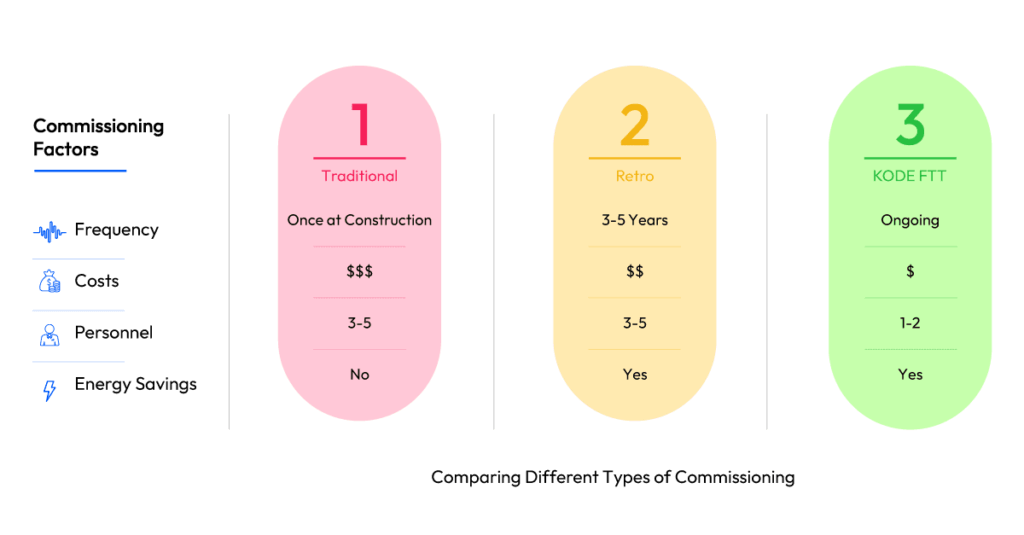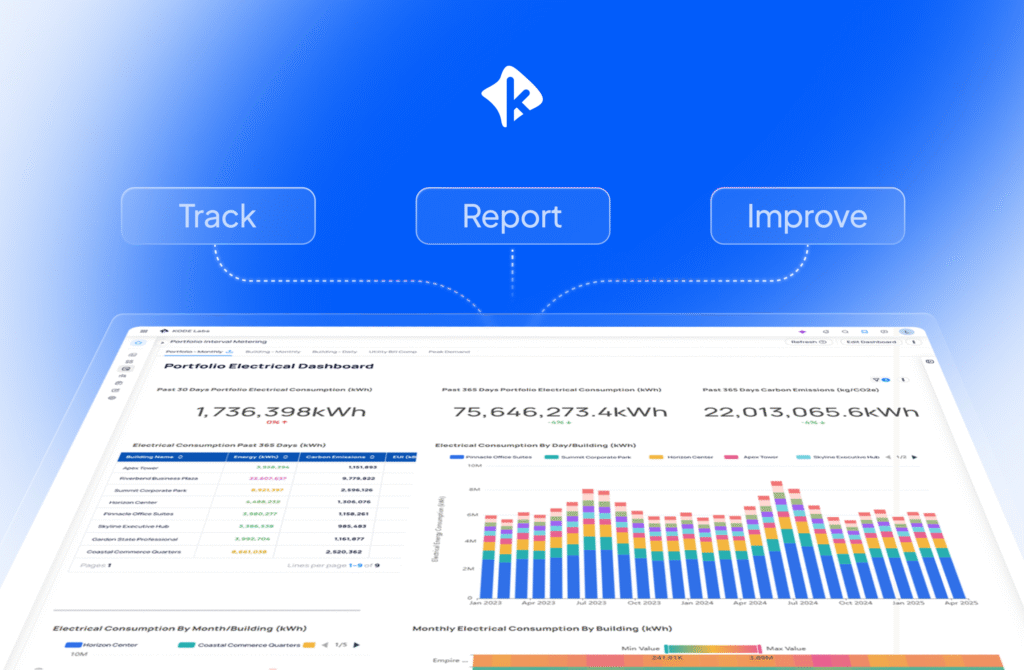On this page
Sign up to our newsletter
Subscribe to receive the latest blog posts to your inbox every week.
By subscribing you agree to with our Privacy Policy.
Modern commercial buildings are intricate ecosystems, boasting complex HVAC systems with thousands of components. Maintaining optimal performance and efficiency in these environments is a significant challenge. Traditional preventive maintenance, completed every few years, or reactive maintenance–completed after equipment fails– often fall short in ensuring consistent performance and tenant satisfaction. This is where ongoing commissioning steps in as a game-changing approach, revolutionizing building maintenance.

Understanding Ongoing Commissioning
Traditional commissioning, whether performed during initial construction or through periodic retro-commissioning, offers a momentary assessment of a building’s equipment performance. This approach relies on testing a small sample of equipment components and making broader assumptions about the lifespan of the entire equipment at a specific point-in-time. While useful, these methods often miss issues that arise between testing periods, leading to reactive problem-solving after tenant discomfort and equipment inefficiencies have already occurred.
Ongoing commissioning, on the other hand, involves ongoing testing and monitoring of a building’s systems. This proactive approach allows facility managers to identify and address emerging faults and inefficiencies before they escalate into significant problems.

How KODE Ongoing Commissioning solves maintenance & commissioning challenges
KODE Ongoing Commissioning takes a different approach to maintenance with its Functional Testing Tool (FTT). This automated, self-serve platform streamlines the commissioning process, making it more efficient and less reliant on external commissioning agents.
Some of the key benefits of Ongoing Commissioning for portfolio operators include:
- Automated Proactive Maintenance: KODE’s FTT continuously analyzes HVAC system components, identifying faults more accurately and efficiently than traditional maintenance methods. This automation allows for rapid detection and resolution of issues, ensuring systems are always at optimal performance.
- Labor & Operational Efficiency: Commissioning projects can be easily scheduled, allowing for systematic maintenance planning. Regular functional tests, such as weekly checks, enable maintenance teams to prioritize and address issues promptly, maximizing productivity.
- Improved Tenant Experience: Frequent functional testing means issues can be resolved before tenants even notice a problem. This proactive maintenance enhances tenant comfort and satisfaction, crucial for retaining high-end tenants.
- Energy Efficiency: By identifying inefficiencies early, buildings can avoid wasting energy on malfunctioning equipment. This leads to significant energy savings and ensures the building operates within its optimal energy consumption range.
- Extended Equipment Lifetime: Ongoing commissioning prevents mechanical failures from overburdening other equipment. By resolving issues immediately, KODE’s FTT helps extend the lifespan of building systems, providing long-term value.

The financial impact of Ongoing Commissioning
Ongoing commissioning not only improves operational efficiency and tenant satisfaction, but also has a substantial financial impact. By reducing the frequency of major equipment failures and extending the lifespan of building systems, maintenance and costs are lowered, by up to 15%.
This proactive approach to maintenance is a necessary evolution in the commercial real estate industry, ensuring buildings are well-maintained, energy-efficient, and ready to meet the demands of modern tenants. Additionally, energy savings from efficient equipment operation contribute to lower overhead costs, enhancing the overall profitability of commercial properties.



